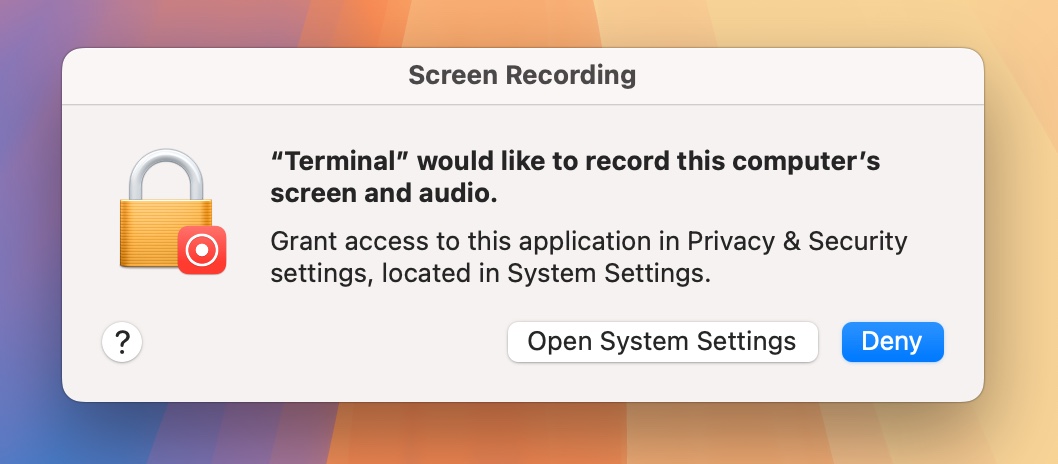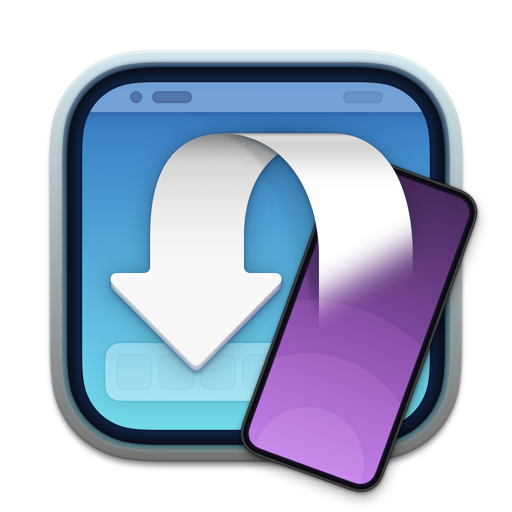Such a nice edition of Michael Crichton’s “Jurassic Park” and “The Lost World”


As a macOS engineer, what do you do when you’re told by Apple’s security team you have to turn it even more into Windows Vista and place even more useless alibi-security permission dialogs somewhere, but you’ve run out of new places to put them in?
Well, you get creative, and show multiple permission dialogs for the same permission.
Can’t innovate anymore, my ass!
Why the heck is this a thing on macOS Sequoia?
When you run the screencapture CLI from Terminal (or any other app) for the first time, you’re usually greeted with this dialog:

Fine. So you grant that permission, run screencapture again, but now you’re greeted with this stupid, infuriating, completely pointless dialog:

Huh!? Yes, I know Terminal can access this computer’s screen and audio. I just granted it that permission!
Seriously? Is this the way forward for macOS? Apple, I know you can do better. Because you used to.
Rant end.

ScreenCastsOnline has published a great tutorial on Transloader, my app that allows you to manage your downloads on your Macs, remotely from your other devices (like an iPhone, iPad, or another Mac).
Yoink for Mac v3.6.91 is now available, containing a couple of minor improvements and bug fixes.
Yoink appears at the edge of your screen when you begin to drag something, allowing you to place it there so you can more easily and comfortably navigate to the destination of your files.
Not only can you drag files to it, but also app-content like images from websites, text snippets, urls, and more.
“This app saved tons of hours for me and boosted my productivity. Totally recommended.”
Nebulan, Mac App Store
Yoink is a one-time purchase on the Mac App Store, or available as part of a Setapp subscription.
A free, 28-day trial is available on the website. The app is available in English, German, French, Japanese, Korean, Simplified Chinese, Italian and Portuguese.
Yoink Website (+ free trial)
Yoink on the Mac App Store (one-time purchase)
Eternal Storms Software Productivity Mac App Store Bundle (includes Yoink, ScreenFloat and Transloader at ~25% off)
Yoink on Setapp (dozens of apps, one subscription)
Yoink is also available for iPhone and iPad
Enjoy : )